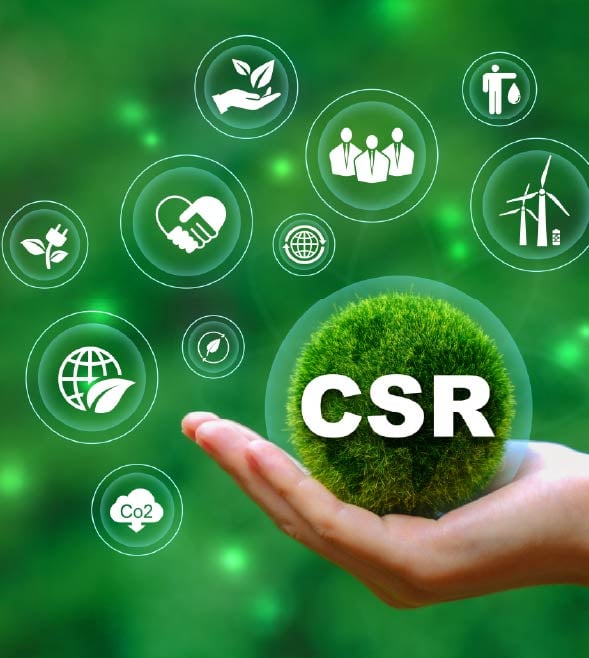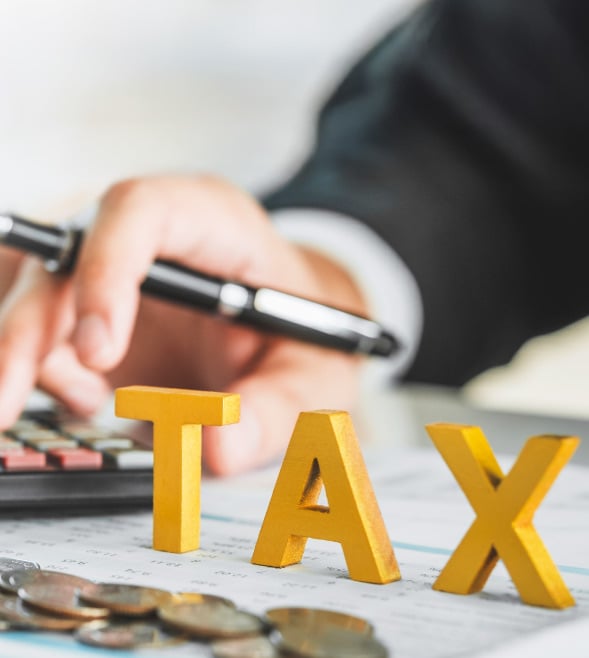-
Business Consulting
Our business consulting specialists offer a comprehensive blend of strategic advisory services. We assess the business, industry, operating model, synergy, skill sets and vision of the organisation and recommend the way forward
-
Digital Natives
Unlock growth with Grant Thornton Bharat's Digital Natives solutions. Customised support for tech-driven companies in healthcare, gaming, and more.
-
New and Emerging Tech
In a world where change is constant, staying ahead means staying adaptable. At Grant Thornton Bharat, we believe the future belongs to those who can evolve quickly, leveraging new and emerging technologies not just as trends, but as strategic levers for transformation.
-
Finance Transformation
Using a holistic approach, integrating digitalisation and digital transformation we help clients achieve transparency, control, governance, and faster decision making through real-time data within the business.
-
Human Capital Consulting
Our Human Capital Consulting team harnesses technology and industry expertise to assist in constructing adaptable organisations with transparency, fostering productive and value-driven workforces, and inspiring employees to engage meaningfully in their tasks.
-
Production Linked Incentive Scheme
Production-linked Incentive Scheme by the Indian government is aimed at boosting manufacturing. Grant Thornton Bharat offers varied services across sectors to help businesses avail of this scheme.
-
Public Sector Advisory
Our Public Sector Advisory team has focused streams, aligned with the core priorities of the Government of India. We are responsible for providing innovative and customized technical and managerial solutions.
-
Tech Advisory
We have amalgamated Digital Transformation, IT Advisory & Information Management and Analytics into a new offering, DigiTech.

-
Direct Tax services
Our tax specialists offer a comprehensive blend of tax services, tax litigation, regulatory and compliance services, helping you navigate through complex business matters.
-
Indirect Tax Services
Get tax services by leading tax firm Grant Thornton India. Our indirect tax services include consulting, compliance and litigation services for corporate, international and transaction tax
-
Transfer pricing services
Our transfer pricing services experts provide a range of services from provision of APA services to handling large global assignments including Country by Country reporting.
-
US Tax
At Grant Thornton, we help individuals and dynamic companies deal with US tax laws, which are one of the most complicated tax legislations across the world.
-
Financial Services - Tax
Best financial advisory services, tailored for small and large businesses by the experts having comprehensive knowledge of domestic laws and access to multifaceted tools to provide a valuable results.
-
Financial Reporting consulting services
Our experts have significant hands-on experience in providing IFRS/US GAAP services, end-to-end solutions and support services to fulfil financial reporting requirements.
-
Fund accounting and financial reporting
International operations often lack standardisation and have varied local reporting formats and requirements. Our experts can offer proactive insights, practical guidance, and positive progress and help meet regulatory timeframes.
-
Compliance and Secretarial Services
Our experts can assist in overhauling the entire compliance machinery of the organisation through evaluation of the applicable statutory obligations, monitoring of adequate governance controls, reporting and providing ongoing support.
-
Global People Solutions
As businesses transcend borders, both domestic and global considerations need equal attention. Our interim CFO and financial controller support services help organisations meet the business vision.
-
Finance and accounting outsourcing
Our accounting experts assist organisations in managing their accounting and reporting. Our dedicated Integrated Knowledge and Capability Centre (IKCC), allows us to service both the domestic and global markets efficiently and cost-effectively
-
Compliance Management System
We have automation solutions for you that will allow meeting government requirements and remain diligent, which when failed, can lead to penalties and loss in revenue.
-
Centres of Excellence
Strategic business hubs for global delivery
-
Global compliance and reporting solutions
At Grant Thornton Bharat, we meet the challenges of our clients and help them unlock their potential for growth. Our professionals offer solutions tailored to meet our clients’ global accounting and statutory reporting requirements. With first-hand experience of local reporting requirements in more than 145+ locations worldwide, we provide seamless and consistent international service delivery through a single point of contact.
-
Related-party transaction governance
Related-party transactions (RPTs) are common in business structures where organisations engage with their group entities, such as holding companies, subsidiaries, associate concerns, joint ventures, or key management personnel, for various operational or financial purposes.
-
Family Offices and Private Client Services
Grant Thornton Bharat Private Client Services offers tailored advisory for family-owned businesses, focusing on governance, compliance, tax, succession planning, and family office structuring to sustain wealth and preserve legacies across generations.
-
Labour codes
Labour codes solutions help you transition through the new legislation. At Grant Thornton, we help businesses divide their approach to make sure a smooth transition.
-
Alerts
At Grant Thornton India, with the help of our tax alerts, we help to provide updates on how to minimise your tax exposure and risks.
-
Unlocking opportunities: India investment roadmap
The India Investment Roadmap resource is designed to navigate the complexities of Indian tax and regulatory laws, providing seamless guidance and a comprehensive set of solutions to ensure a smooth process for investors aiming to establish or expand their presence in India.
-
CFO Solutions
Our comprehensive suite of solutions for CFOs

-
Cyber
In today’s time, businesses have gone through large transformation initiatives such as adoption of digital technologies, transition to cloud, use of advanced technologies et al.
-
Risk Optimisation
Our Governance, Risk and Operations (GRO) services encompass Internal Audit, Enterprise Risk Management, Internal Financial Controls, IT advisory, Standard Operating Procedures and other services.
-
Risk analytics
Grant Thornton Bharat’s CLEARR Insights is a state-of-the art data analytics platform that will help you in seamless data analysis and efficient decision-making.
-
Forensic & Investigation Services
The team of forensic advisory services experts consists of the best intelligence corporate experts, and fraud risk, computer forensic experts to deliver most effective solutions to dynamic Indian businesses.
-
Digital Forensics and Incident Response (DFIR)
Strengthen cyber resilience with proactive forensic audits
-
ESG consulting
Grant Thornton Bharat offers holistic ESG consulting solutions for sustainable business outcomes. With industry expertise and AI technology, we drive long-term value.

-
Transaction Tax Services
Our transaction tax experts understand your business, anticipate your needs and come up with robust tax solutions that help you achieve business objectives ensuring compliance and efficiency
-
Deal Advisory
Unlike other M&A advisory firm in India, we offer deal advisory services and work exclusively with controlled and well-designed strategies to help businesses grow, expand and create value.
-
Due Diligence
Grant Thornton’s financial due diligence services are aimed at corporate looking for mergers and acquisitions, private equity firms evaluating investments and businesses/promoters considering sale/divestment.
-
Valuations
As one of the leading valuation consultants in India, Grant Thornton specializes in all the aspects of the process like business valuation services, financial reporting, tax issues, etc.
-
Overseas Listing
Overseas listing presents a perfect platform for mid-sized Indian companies with global ambitions. Grant Thornton’s team of experts in listings, work closely with clients during all stages.
-
IPO Services
Grant Thornton Bharat’s IPO services ensure optimal scaling of organisations in the financial markets
-
Debt & Special Situations Solutions
Grant Thornton Bharat offers specialist debt and special situations consulting services, including restructuring, insolvency, and asset tracing solutions.
-
Financial Reporting Advisory Services
Grant Thornton Bharat Financial Reporting Advisory Services offer end-to-end solutions for complex financial requirements, including GAAP conversions, IPO support, and hedge accounting advisory, ensuring accurate financial reporting and compliance.
-
Financial Statement Audit and Attestation Services
Grant Thornton Bharat offers customised financial statement audit and attestation services, ensuring impeccable quality and compliance with global standards. Our partner-led approach, technical expertise, and market credibility ensure effective solutions for your business needs.

- Agriculture
- Asset management
- Automotive and EV
- Banking
- Education and ed-tech
- Energy & Renewables
- Engineering & industrial products
- Fintech
- FMCG & consumer goods
- Food processing
- Gaming
- Healthcare
- Urban infrastructure
- Insurance
- Media
- Medical devices
- Metals & Mining
- NBFC
- Pharma, bio tech & life sciences
- Real estate and REITs
- Retail & E-commerce
- Specialty chemicals
- Sports
- Technology
- Telecom
- Tourism & hospitality
-
 Thought leadership Co-lending in India: Expanding credit access for MSMEsIn today’s rapidly evolving financial landscape, co-lending has emerged as a key enabler of credit expansion in India, facilitating partnerships between banks and non-banking financial companies (NBFCs) to extend credit more efficiently to underserved segments.
Thought leadership Co-lending in India: Expanding credit access for MSMEsIn today’s rapidly evolving financial landscape, co-lending has emerged as a key enabler of credit expansion in India, facilitating partnerships between banks and non-banking financial companies (NBFCs) to extend credit more efficiently to underserved segments. -
 Article Why India’s financial inclusion journey needs to focus on equity and access to creditFinancial services have expanded over a decade, giving millions access to bank accounts and digital payments. But true empowerment needs to reach every corner of the country if growth is to be long-term and sustained
Article Why India’s financial inclusion journey needs to focus on equity and access to creditFinancial services have expanded over a decade, giving millions access to bank accounts and digital payments. But true empowerment needs to reach every corner of the country if growth is to be long-term and sustained -
 Thought Leadership Competitive and sustainable agriculture & food processing in KeralaThe economy of Kerala is primarily driven by the services sector, which contributes 66% to the Gross State Domestic Product (GSDP).
Thought Leadership Competitive and sustainable agriculture & food processing in KeralaThe economy of Kerala is primarily driven by the services sector, which contributes 66% to the Gross State Domestic Product (GSDP). -
 Article Economic Survey 2024-25: Deregulation, investment and innovation for a Viksit BharatIndia's economic growth remains for a steady trajectory with real GDP expected to grow at 6.4% in FY25 and in the range of 6.3%-6.8% in FY26, reflecting resilience despite global uncertainties.
Article Economic Survey 2024-25: Deregulation, investment and innovation for a Viksit BharatIndia's economic growth remains for a steady trajectory with real GDP expected to grow at 6.4% in FY25 and in the range of 6.3%-6.8% in FY26, reflecting resilience despite global uncertainties.
-
Quarterly Aviation Insights
Explore the latest trends in aviation industry with Grant Thornton Bharat’s Quarterly Aviation Insights. Stay updated on industry growth, market shifts & key developments.

-
Freight Forward: Quarterly insights
Logistics sector in India is adapting to rising costs, global disruptions, and the growing urgency of sustainability.
-
India-UK
India-UK
-
India - Japan
India - Japan

Among the most significant measures is the exemption of individual health and life insurance services. At first glance, the exemption alleviates financial burdens on households by lowering premium costs, signaling a welfare-oriented intent. Simultaneously, it encourages wider insurance penetration, aligning with the government's vision of 'insurance for all' by 2047. However, the exemption carries a sizeable fiscal cost with estimates suggesting a revenue foregone of nearly INR 97 billion annually. Economically, it would strengthen demand for formal insurance coverage, thereby easing healthcare affordability. However, the exemption creates new distortions in the credit chain. Insurers will continue to incur input GST on distribution, technology, and administrative services, yet will be unable to offset the same against exempted output, leaving them with stranded credits. In practice, this could either squeeze margins or lead to selective cost pass-through in premiums, undermining the intended consumer relief
A further nuance lies in the scope of the exemption, which applies only to individual life and health insurance policies, not to corporate group insurance schemes. For corporates that provide medical coverage as part of compensation packages, premiums will remain taxable at 18%. This distinction has two practical implications: Primarily, it ensures that the fiscal cost of the exemption is contained by limiting it to household-level policies. Secondly, it may distort because employees covered under corporate policies would not benefit from reduced premiums, and companies cannot claim ITC due to the explicit restriction under blocked credit provisions.
The rate restructuring for the hotel and restaurant industry signals a clear policy tilt towards simplification, but it carries layered implications, for hotels with room tariffs below INR 7500, a shift from 12% (with ITC) to 5% (without ITC) eliminates the entitlement to claim credit on capital goods and input services. As a result, operators are required to reverse any unutilised credits corresponding to the remaining months1. This creates an immediate cash-flow and compliance burden, especially for mid-sized hotels that have recently invested in renovations or expansions. Hotels with a mix of room tariffs now face a dual regime: rooms priced below INR 7500 will be taxed at 5% (without ITC), while rooms above INR 7500 continue at 18% (with ITC), necessitating complex apportionment of credits2. Independent restaurants remain at 5% (without ITC), but the option to declare as a 'specified premise' and opt for 18% with ITC has now been withdrawn, narrowing flexibility for operators who relied on credit to offs
The reforms also extend meaningfully to job-work services, which are a critical link in the pharma, textiles, and wider MSME manufacturing ecosystem. Shift of specific categories such as pharma job work, printing, and labour-intensive activities have been shifted to a concessional 5% rate, while all other residual job-work services have been aligned at 18%. On the face of it, the lower rate provides welcome relief to contract manufacturers and MSMEs, where margins are thin and job work often constitutes a substantial share of production costs. By easing this burden, the change helps preserve competitiveness and employment across decentralised clusters. Yet, the structure also introduces a new layer of complexity: with two distinct rates in operation, businesses will need to ensure precise classification of job-work activities to prevent disputes. Principals and job workers alike must strengthen documentation, contractual terms, and invoicing practices to ensure eligibility and smooth flow of ITC. In particular, where job-work is intertwined with ancillary activities, demarcating which elements qualify for concessional treatment will be critical. Over time, the dual-rate design has the potential to stabilise into a predictable framework, but only if clear guidelines and consistent application are ensured. Otherwise, lingering ambiguities could open the door to avoidable litigation.
The reform agenda has also been carried into the sphere of social and cultural services, reflecting the government's broader effort to weave sustainability objectives into the fabric of GST 2.0. Concessional treatment has been provided to low-value cinema tickets, biomedical waste management, and effluent treatment services. While the impact on overall revenue collection may be modest, the social and policy dividends will be significant. By reducing the tax burden on small cinema halls and low-priced tickets, the reform promotes more affordable access to cultural entertainment, especially in semi-urban and rural areas where such outlets are often the only affordable leisure option. Similarly, lowering GST on biomedical and effluent treatment directly reduces costs for hospitals, laboratories, and industrial units, strengthening compliance with environmental and healthcare regulations. In effect, the policy nudges businesses and institutions towards more sustainable and socially beneficial practices, while en
The transport and logistics sector has also seen a significant recalibration under GST 2.0. With the phasing out of the 12% rate slab, passenger and goods transport services, which were earlier taxable under 12% (with ITC), are now uniformly taxed at 18% (with ITC). This rationalisation extends across public transport, multimodal freight, petroleum pipeline transport, and vehicle rental services, bringing coherence to a sector long plagued by fragmented tax treatment and ensuring consistency. The reduction in GST on the purchase of trucks, buses, and passenger vehicles used for transport has eased procurement costs by nearly 10%, offering tangible working-capital relief to fleet operators.
In the construction and contracting sector, offshore oil and gas contracts, along with government projects involving large-scale earthwork, will now be taxed at 18%, aligning them with the broader works contract framework. For the government, this seems like a revenue-positive move.
Casinos, race clubs, and online gaming platforms now face a steep 40% levy, marking a sharp increase in their effective tax incidence under the GST framework. This change is accompanied by stricter regulatory measures, especially targeting online money gaming, which is set to be outlawed, underscoring the government's intent to curb potential social harms associated with gambling. However, it may also disrupt business models, stifle innovation, and drive parts of the industry underground if not carefully implemented.
Conclusion
GST 2.0's service sector recalibration is not merely a rate exercise but a deliberate attempt to rebalance welfare, revenue, and efficiency. By deepening credit alignment, incentivising formalisation, and rationalising slabs, the reform strengthens India's tax base while providing targeted relief to households.
Shilpa Verma, Associate Director, Grant Thornton Bharat, has also contributed to this article.
This article first appeared in the Taxmann on 29 October 2025.




